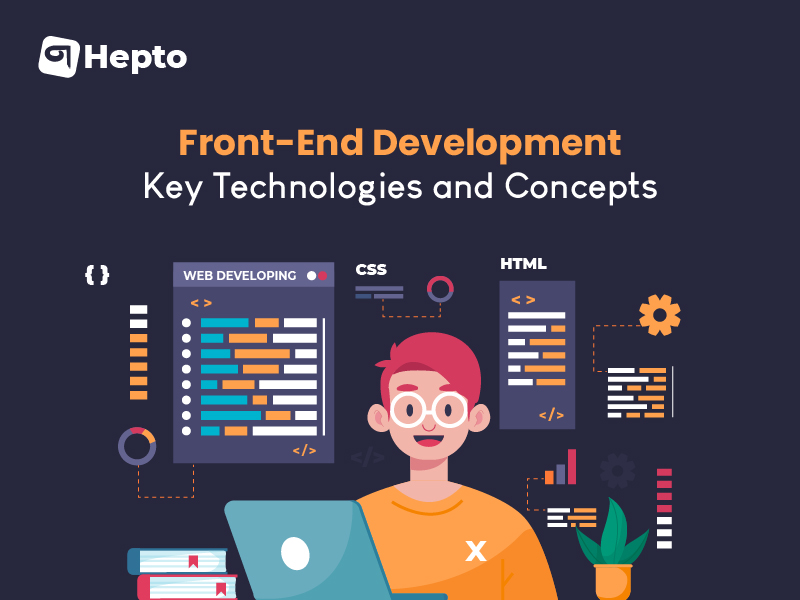Front-End Development: Key Technologies and Concepts
The Covid Pandemic has favoured the web and app development industry on a massive scale. Businesses are shifting from traditional physical operations to digital platforms. With it, numerous new opportunities are knocking on the door for investment and the boom of the industry has increased the demand for Front and Back-End developers. Front-End developers need to design websites and mobile apps that are engaging enough to nudge the target audience toward a conversion. In this blog, we are going to learn all about Front-End development; the newest trends required skills and the technologies involved. Let's take a deeper look into what front-end development is, and the different languages that are trends in front-end development.
What is Front-End Development?
The front-end refers to the component of the program that focuses on the coding and creation of elements and features of a website that customers can view and interact with.
Frontend Development Languages
Frontend developers use technologies to transform coded data into user-friendly interfaces such as HyperText Markup Language (HTML), Cascading Style Sheets (CSS), and JavaScript.
A front-end developer uses code that affects how a website looks and how a user interacts with its web pages. Front-End Development includes simple elements such as buttons that take a visitor to different places within the website, as well as input methods, like a contact form. The front-end programming languages that a front-end developer uses can create a static webpage or a dynamic one.
Font-End Development Trends:
- HTML
- CSS
- DOM
- JavaScript
- jQuery
What Front-End Developers Should Know?
Below are brief descriptions of the front-end technologies that front-end developers must be familiar with.
HTML - The Key Front-End Technology
HTML is the programming language used to build web pages that anyone can see with an Internet connection. HTML is used to create web documents and used to describe and mark content, so a browser displays it correctly. It is the method of navigating the internet by clicking on hyperlinks, which are unique texts that lead to other pages. HTML5 includes features like offline media storage support, more precise content elements, and audio and video integration support.
CSS - Styling Your Facade
CSS is a language for creating style sheets and a set of instructions that control a webpage’s style and structure than a programming language. It helps front-end developers manage a website or web application’s formatting, presentation, and layout. It is used to decide how HTML elements are displayed on the website in terms of looks, functionality and selection of various users with different screen sizes.
DOM - The Web Page Structure
The structure of a web page is known as the Document Object Model (DOM) is defined as a programming interface for HTML and XML documents. DOM interprets the page so that programs can change the document's structure, style, and content. The document is rendered as nodes and objects by the DOM, enabling the programming languages to connect to the page.
JavaScript - Making The Web Alive
JavaScript (JS) is one of the most popular scripting languages and is well known for offering a complete technology stack for both front-end and back-end development. It improves the overall interactivity of a website and allows the creation of dynamic UI elements like picture sliders, pop-ups, and complex site navigation menus, among other things. JavaScript comes in with Ajax and allows front-end developers to use event-based coding to build a better user experience.
jQuery - To Standardize Interactions
jQuery is an open-sourced JavaScript library that helps to simplify and standardize interactions between JavaScript code and HTML elements. It is aimed at controlling HTML documents and has a simple API to control events and design animation in browsers. jQuery comes with a lighter cross-browser library, applied to manipulate the Document Object Model (DOM) and serves as a plugin development tool as well.
Final Thoughts
In today’s interactive world, it isn’t enough to create a user-friendly interface and also a web design must also drive sales and conversions. The website design must be responsive to how every visitor interacts with a site. There are many more technologies, skills, and overall knowledge for front-end development to learn. However, we hope that this blog created a path for the journey into the forest of front-end development to keep the traveller from getting lost.
